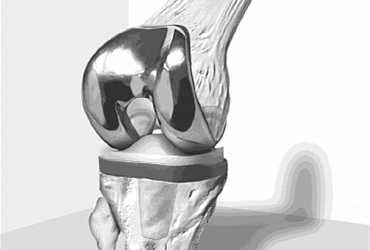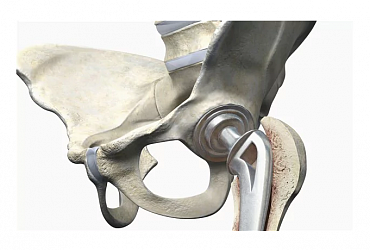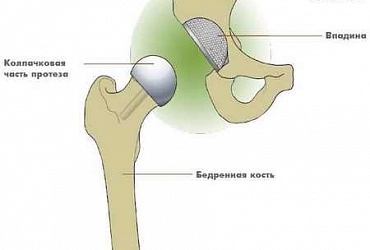Еndoprosthesis of intervertebral disk

Biomechanical tests of the artificial disk of the cervical spine of M6 demonstrated the quality of mobility equivalent to a healthy human disk. The innovative design of an artificial fibrous ring and M6 core is the most important component of the imitation of physiological mobility, since the artificial disk provides the limited and control inherent in the natural amplitude of the mobility of the spine.
The quality of mobility is an indicator demonstrating how much the mobility of the implanted functional element of the spine is approximated to the mobility of a healthy element over the entire mobility amplitude, and not only at its end points. Based on the results of biomechanical tests, the curve of the dependence of the angular displacement on the load ("kinematic pattern") is constructed, which makes it possible to evaluate the parameters of the quality of mobility.
Endoprosthetics of the intervertebral disc
Artificial discs of the cervical spine M6-C and lumbar spine M6-L are designed to simulate the anatomical structure and biomechanical properties of the natural disc. Its innovative design includes an artificial core providing axial compression, and a ring of fibrous material providing mobility with controlled amplitude and with six degrees of freedom. This physiological mobility is designed to preserve the mobility of the spinal segment and, possibly, prevent or delay further degeneration of the discs at the level of adjacent vertebrae.
The prosthesis consists of two hinges, each of which constructively consists of a plate with insertion of the friction unit. The surface of the plates repeats the anatomical shape of the vertebral bodies, which reduces damage at the time of implantation and reliably stabilizes the endoprosthesis.

Indications for discectomy with functional stabilization of the artificial intervertebral disc:
· the patient's symptoms associated with the herniated intervertebral disc functional inconsistency of the intervertebral disc and a significant decrease in the height of the interbody spacing
· prolonged "low back pain" syndrome, resistant to conservative treatment, against the background of a marked decrease in the patient's activity and ability to work
· foraminous stenosis





